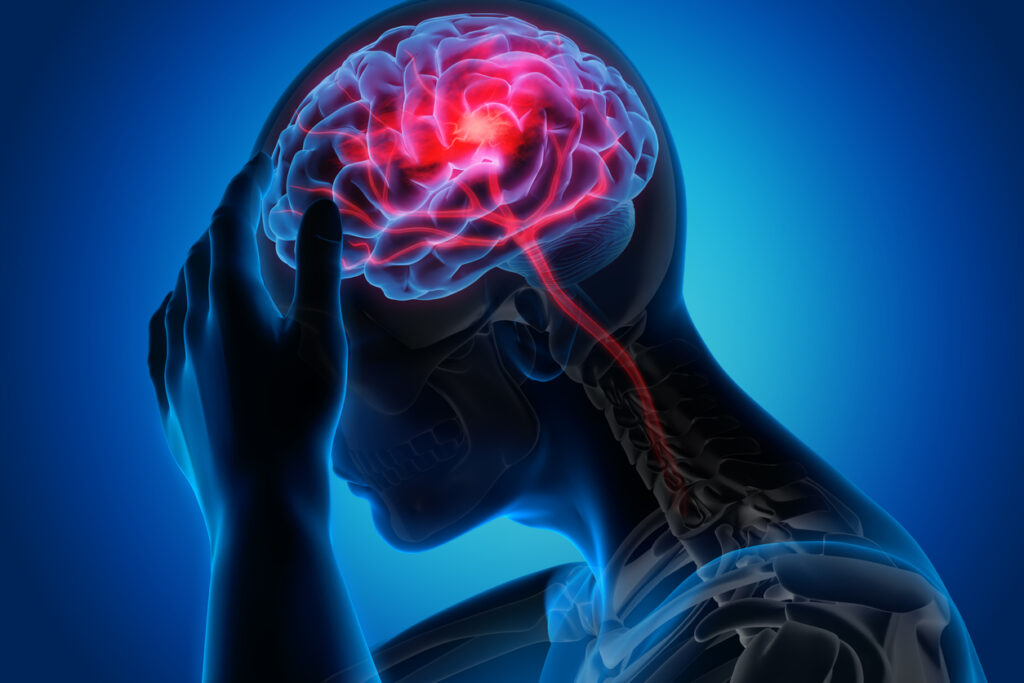What to Do in Case of a Stroke
A stroke happens when the blood flow to part of your brain is blocked or when a blood vessel bursts in the brain. This can damage parts of the brain and cause problems in your body. Strokes are a significant cause of disability and death, but quick treatment can save lives.
Types of Stroke
There are three main types of strokes:
- Ischemic Stroke: This is the most common kind. It happens when a blood clot blocks a blood vessel in the brain, stopping oxygen from getting to brain cells.
- Hemorrhagic Stroke: This happens when a blood vessel bursts, causing bleeding in or around the brain. This type is less common but often more serious.
- Transient Ischemic Attack (TIA): Also called a “mini-stroke,” a TIA happens when a blockage stops blood flow for a short time. Symptoms may go away quickly, but it’s a warning sign that a bigger stroke could happen soon.
How to Know If You’re Having a Stroke
Having a stroke can feel scary and confusing. People often say symptoms appear suddenly. Here are some things you might feel:
- Numbness or weakness, especially on one side of your face, arm, or leg
- Trouble speaking or understanding what others are saying
- Blurred or double vision
- Dizziness or difficulty walking
- A severe headache (in cases of a hemorrhagic stroke)
Signs of a Stroke
The signs of a stroke can be remembered with FAST:
F: Face drooping – One side of the face may droop. Ask the person to smile.
A: Arm weakness – If one arm drifts downward when both arms are raised.
S: Speech difficulty – Slurred or strange speech. Ask the person to repeat a simple sentence.
T: Time to call 911 – If you see any of these signs, call for help right away.
What to Do Right Away
If you think someone is having a stroke, call 911 immediately. Quick treatment can prevent further brain damage. While waiting for help:
- Keep the person calm and still.
- Make sure they are lying down, with their head slightly raised if possible.
- If they are unconscious, check their breathing and keep their airway open.
- Administering a 50/50 dilution of DMSO orally and rubbing DMSO on the head, neck, and upper torso as soon as possible will increase survivability and decrease damage.
Standard Treatments for Stroke
Ischemic Stroke (caused by a blood clot)
- Clot-busting drugs (tPA): If given within a few hours, this medicine can dissolve the clot and restore blood flow.
- Mechanical thrombectomy: A doctor may use a small device to remove the clot.
Hemorrhagic Stroke (caused by a burst blood vessel)
- Blood pressure control: Medicines can help lower blood pressure and reduce bleeding.
- Surgery: Sometimes, doctors need to perform surgery to stop the bleeding or relieve pressure on the brain.
- TIAs: These mini-strokes are a warning. Doctors often prescribe blood-thinning medicines to prevent future strokes, along with lifestyle changes.
Alternative Treatments for Stroke
Some people try alternative therapies to help with recovery. These methods should be used along with medical treatment:
- Acupuncture: This practice may help improve movement after a stroke.
- Herbal supplements: Some herbs, like ginkgo biloba, are thought to improve circulation, but you should talk to your doctor before using them.
- Magnesium Oil: Rubbing oceanic magnesium or magnesium chloride on your body daily keeps blood vessels.
- Hyperbaric Oxygen Therapy (HBOT): This treatment uses high-pressure oxygen to help the brain heal.
- Yoga and meditation: These practices can lower stress, which helps prevent future strokes.
What Happens After a Stroke
The aftereffects of a stroke depend on the affected part of the brain. Some common long-term effects are:
- Weakness or paralysis on one side of the body
- Trouble speaking or understanding words
- Problems with memory or thinking
- Depression or emotional changes
- Fatigue (feeling tired all the time)
How to Recover from a Stroke
Recovery can take time and often involves several types of therapy:
- Physical therapy: Helps rebuild strength and movement in weak or paralyzed muscles.
- Speech therapy: Helps people who have trouble speaking or understanding language.
- Occupational therapy: Helps people relearn daily tasks like eating, dressing, and writing.
- Counseling or support groups: Emotional support is essential to deal with the mental health challenges that can come after a stroke.
- Lifestyle changes: Eating healthy, exercising, and quitting smoking can help prevent future strokes.
A stroke is a severe medical emergency, but quick treatment can save lives. The best ways to fight back against stroke’s effects are to recognize the signs, get help quickly, and work hard on recovery. Taking care of your health and watching for warning signs can lower your risk of stroke in the future.
References
Mayo Clinic. (2023). Stroke.
American Stroke Association. (2023). About Stroke.
National Institute of Neurological Disorders and Stroke (NINDS). (2023). Stroke Information Page.
DMSO dimethyl Sulfoxide for Humans Recipes & Treatments (2022) Herb Roi Richards, Ph.D.
Oceanic Magnesium: How to Use Topical Sea Water Magnesium for Health Benefits (2024) Herb Roi Richards, Ph.D.
Alternative Resources for Dealing with a Stroke

